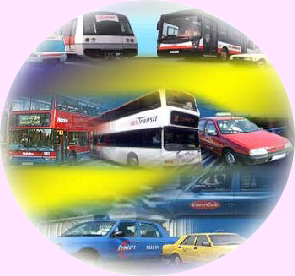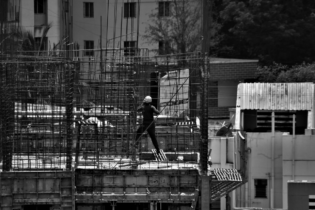During transport month this October, the spotlight will be on the role of public transport in South Africa’s economic development. In particular, our focus should be on assessing our progress in providing safe, reliable and affordable public transport to economically marginalised communities and looking at how local municipalities are participating in this process.It has been five years since the national Department of Transport’s Public Transport Action Plan was approved by Cabinet. In that time we have seen an unprecedented acceleration in public transport development across the country, including upgraded infrastructure, the Gautrain, and bus rapid transport (BRT) systems in several cities.
 Government’s investment in public transport aims at improving mobility and accessibility, with a view to enabling economic activity, alleviating poverty, improving safety and providing for community needs. Reduction of carbon emissions is also on the agenda. The vision of the Department’s public transport strategy is well in line with international consensus that economic growth is heavily dependent on having good transport networks in place, a view iterated by Transport Minister Ben Martins who says that transport policy is a pivotal catalyst for socio-economic development in South Africa.
At the same time, we still have a long way to go to reach the level of public transport that is needed to fully address our socio-economic challenges. Finance Minister PravinGordhan told the ANC’s National Policy Conference in June 2012 that inadequate transport infrastructure, along with our skills shortage, is limiting the country’s economic growth. It is thus critical that the public sector should not lose momentum in its investment in transport infrastructure. Since infrastructure investment is one of the six sectors earmarked for job creation in the New Growth Path towards 2020, local governments can do much to leverage this opportunity to direct state funding to public transport infrastructure in their own communities.
A strong motivation for spending on public transport infrastructure is that the average return on investment in this sector has yielded 24.5% in the past, one of the highest returns on state spending. This is according to Peter Copley, operations evaluation specialist at the Development Bank of SA. Copley points out that the humanitarian returns are just as impressive as the monetary ones and that public transport can play a crucial role in alleviating poverty in marginalised communities.
Indeed, the spatial legacy of apartheid continues to have a significant impact on the lives of those who live far from work opportunities, especially those living in rural areas and on the fringes of urban settlements. The majority of these communities still face a crippling lack of affordable and accessible public transport, effectively cutting them off from opportunities to find work or gain access to education and economic markets.
A recent study conducted by the Development Policy Research Unit at the University of Cape Town (July 2012) has found that “spatial apartheid does not allow for optimal job search among the unemployed” and that the cost and time of travel to the workplace remains skewed in favour of those who are skilled or economically privileged. The last National Household Travel Survey found that more than two-thirds of households with an income less than R1 000 a month spend more than 20% of their income on transport.
Integrated rapid transport is being driven as a solution to public transport needs by the Public Transport Action Plan, which is why we have seen the implementation of systems like Rea Vaya and My Citi. Although we have yet to experience the long term outcomes and there have been some challenges in its making, rapid, high-quality public transport has the potential to be a highly effective vehicle for poverty alleviation and job creation.
Government’s investment in public transport aims at improving mobility and accessibility, with a view to enabling economic activity, alleviating poverty, improving safety and providing for community needs. Reduction of carbon emissions is also on the agenda. The vision of the Department’s public transport strategy is well in line with international consensus that economic growth is heavily dependent on having good transport networks in place, a view iterated by Transport Minister Ben Martins who says that transport policy is a pivotal catalyst for socio-economic development in South Africa.
At the same time, we still have a long way to go to reach the level of public transport that is needed to fully address our socio-economic challenges. Finance Minister PravinGordhan told the ANC’s National Policy Conference in June 2012 that inadequate transport infrastructure, along with our skills shortage, is limiting the country’s economic growth. It is thus critical that the public sector should not lose momentum in its investment in transport infrastructure. Since infrastructure investment is one of the six sectors earmarked for job creation in the New Growth Path towards 2020, local governments can do much to leverage this opportunity to direct state funding to public transport infrastructure in their own communities.
A strong motivation for spending on public transport infrastructure is that the average return on investment in this sector has yielded 24.5% in the past, one of the highest returns on state spending. This is according to Peter Copley, operations evaluation specialist at the Development Bank of SA. Copley points out that the humanitarian returns are just as impressive as the monetary ones and that public transport can play a crucial role in alleviating poverty in marginalised communities.
Indeed, the spatial legacy of apartheid continues to have a significant impact on the lives of those who live far from work opportunities, especially those living in rural areas and on the fringes of urban settlements. The majority of these communities still face a crippling lack of affordable and accessible public transport, effectively cutting them off from opportunities to find work or gain access to education and economic markets.
A recent study conducted by the Development Policy Research Unit at the University of Cape Town (July 2012) has found that “spatial apartheid does not allow for optimal job search among the unemployed” and that the cost and time of travel to the workplace remains skewed in favour of those who are skilled or economically privileged. The last National Household Travel Survey found that more than two-thirds of households with an income less than R1 000 a month spend more than 20% of their income on transport.
Integrated rapid transport is being driven as a solution to public transport needs by the Public Transport Action Plan, which is why we have seen the implementation of systems like Rea Vaya and My Citi. Although we have yet to experience the long term outcomes and there have been some challenges in its making, rapid, high-quality public transport has the potential to be a highly effective vehicle for poverty alleviation and job creation.
Systems such as Bus Rapid Transit (BRT) are now viewed as a sustainable solution for world class mobility in African cities and economic development on the continent, to the extent that BRT will be the subject of the UATP Congress and Exhibition of African Public Transport to be held in Johannesburg from 8 – 11 October 2012. One message that should come out loud and clear from the Congress is that integrated rapid transport is not only for metropolitan cities. A prime example of how it can work in medium-sized secondary cities is the newest system under construction in South Africa, the Rustenburg Rapid Transport (RRT) system in the North West Province.
A recent SA Cities Network report (March 2012) on secondary cities says that Rustenburg
A significant feature of the RRT system is its creation of new opportunities for existing minibus taxi operators and workers in the taxi industry. RRT has engaged with the local minibus taxi industry and a negotiated solution is being developed to ensure no loss of legitimate jobs. Affected bus and taxi operators will have the opportunity to receive contracts from the Rustenburg Local Municipality to operate the RRT system. This forms part of the RRT’s inclusive approach to socio-economic development which will see low income groups given opportunities to participate in the economy. The Rustenburg municipality has stipulated that at least 25% of the value of construction and other contracts must be spent on local procurement from B-BBEEE suppliers and contractors are required to partner with local companies and build skills capacity. Construction of the RRT will provide an estimated 5 000 contract jobs, and over 1000 permanent jobs for local residents as the system is phased in from 2015. The RRT is also gearing up for local job creation in the long term, such as implementing skills training for local residents to be employed in the system once it comes into operation, and facilitating small enterprise development within the community to provide the support services that the system will need in future. In addition, Rustenburg is one of the first cities to actively unpack and promote the various career options in public transport to the schools and youth in the region, showcasing new industry options to inspire educators and learners. The project is also piloting a graduate incubation programme (TRIP) with transport graduates to ensure that managerial and technical skills are built for the municipality to effectively manage the system once launched. Rustenburg has done its homework very thoroughly, and the result is likely to be maximum leverage of economic development from a modern public transport system that is convenient, safe, reliable and affordable, one that will go a long way towards achieving the government’s target of reducing carbon emissions by 34% by 2025, and will serve all communities in Rustenburg.








